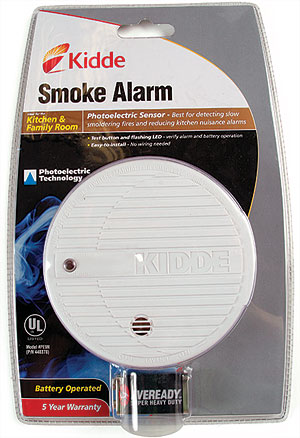What's the Difference: Smoke alarms
Product packaging is the only real way to tell photoelectric and ionization alarms apart
The importance of having properly functioning smoke alarms in houses is widely known. Not so well known are the differences between the sensory systems they use.
Hardwired and battery-operated smoke alarms are available with photoelectric sensors, ionization sensors, or a combination of both. Each type of sensor meets industry standards for adequate fire detection, but each does so at different rates depending on the nature of the fire.
The cost and the visual appearance of photoelectric and ionization alarms are virtually the same, so paying close attention to product packaging is the only real way to tell these lifesaving products apart.
Photoelectric alarms detect smoldering fires faster

How they work
The sensors in a photoelectric alarm are triggered by light. When combustion particles—more commonly called smoke—fill the chamber, a constant beam of light reflects off the particles and into electronic sensors that sound the alarm.
Why they’re more sensitive to smoldering fires
Combustion particles from smoldering fires are much larger than those from flaming fires and reflect more light.
Ideal placement
These alarms should be installed in living rooms, bedrooms, and other rooms that have lots of carpet, upholstery, and fabric, which tend to generate smoldering fires.
Ionization alarms respond faster to flaming fires

How they work
The detection system in an ionization alarm is based on electric current. When combustion particles enter the sensing chamber, they attach themselves to charged air molecules, causing a reduction in electrical current, which triggers the alarm.
Why they’re more sensitive to flame
The small, invisible combustion particles given off by flaming fires are more easily detected on a molecular level.
Ideal placement
Use ionization alarms in kitchens, garages, and basements, where flaming fires are more likely to occur.
Photos by: Krysta S. Doerfler


























